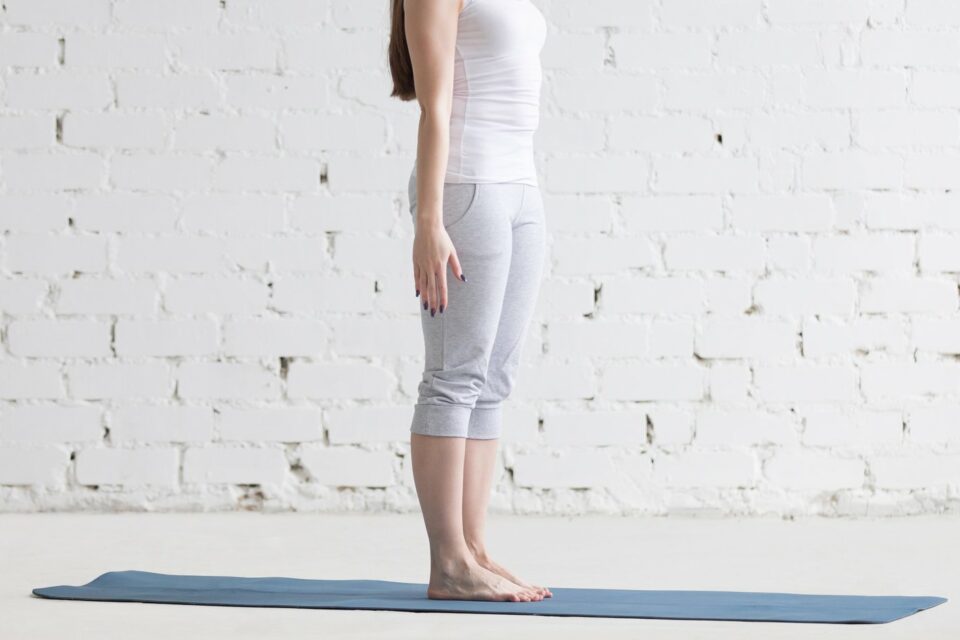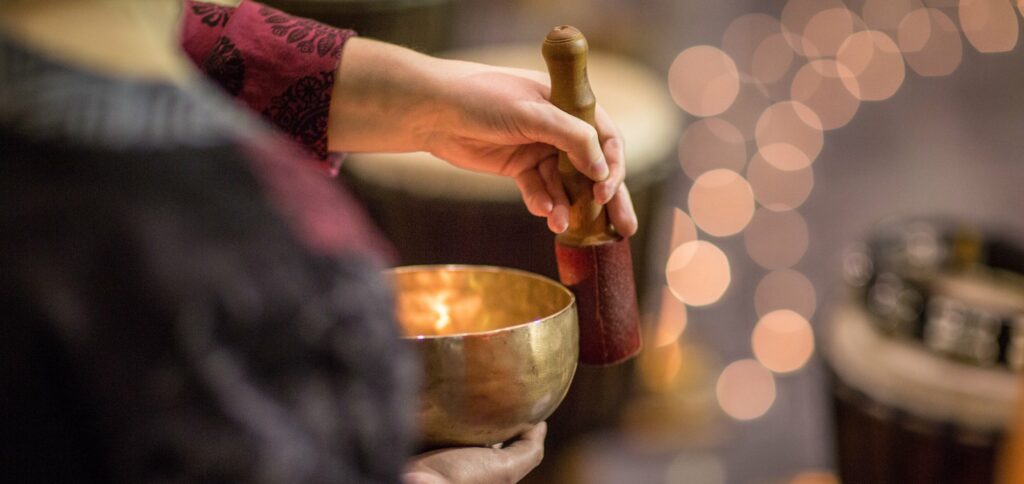Tadasana: a grounding pose

Tadasana is the standing base pose of the entire practice of yoga. Yes, it seems just like standing with arms along the body, but we can guarantee there is much more than that in this pose.
Yoga asanas are many times seen as something that needs to be closer to contortionism, but it’s in the simplest movements and in the details that the biggest benefits can be found.
A solid base is important in any practice, as it is in life, and yoga is the science of life. Therefore, let’s find out what Tadasana doesn’t show when we first look at it!
Tadasana: the Mountain Pose
Tadasana is the strong foundation of the posture, therefore it stands for mountain pose. It is stable as a mountain is and provides a grounded base from where to start exploring other movements.
While many classes start in seating positions, some teacher opts to start in Tadasana. In any case, Tadasana is always present in the standing sequences of the practice.

Tadasana, the details
While it looks easy, Tadasana is also full of important details. Different schools can differ in some of the movements or actions, and for that, we’ll try to cover distinct options. Let’s go by parts!
The feet
The feet must be parallel, which will be common in any yoga style. Despite that, some teachers defend that independent of the body specifications, the student always has to work on getting closer to be able to keep the feet parallel, while others will stand for respecting the body inclinations.
Traditionally, the pose is done with feet together, but for different reasons, some teachers will allow you to keep your feet apart till hip-length. A lack of balance, pregnancy or comfort can be some of the reasons mentioned.
The legs
The legs are stretched, but it’s important to not overstretch it and to keep your quadriceps active in order to protect the knees, improve stability and strengthen the legs.
The perineum
The use of Mula Bandha is recommended during Tadasana. This bandha, located on the root chakra, consists of the contractions of the perineum and sexual muscles inward and also promotes balance.
The lower back
The lower back in Tadasana is a reason for arguments in the yoga world. The fact that the tail bone must point to the floor, led many people to correct the lower back in a negative way, losing the natural curvature. It’s important to avoid that the curvature is too accentuated.
The chest, shoulders, and arms
Keep the chest opened, the shoulders relaxed and the arms along the body. The hands must be awakened, but not with tension.
To help with these actions, inhale and bring your shoulders up, and as you exhale bring them back (shoulder blades closer) and down.
The head
One common tendency is to keep the chin up and pointing to the front. It results in more tension, while bringing it closer to the neck will release tension. The back part of the neck must be in line with both the back and the head.
You may also like:
- Bhakti Yoga: a spiritual practice
- Power Yoga: feel the difference
- Iyengar Yoga: slow and steady wins the race
- Sivananda Yoga: what to know
- Yoga Nidra: the yoga hack
- Anusara yoga: what is it and why you should doing this

